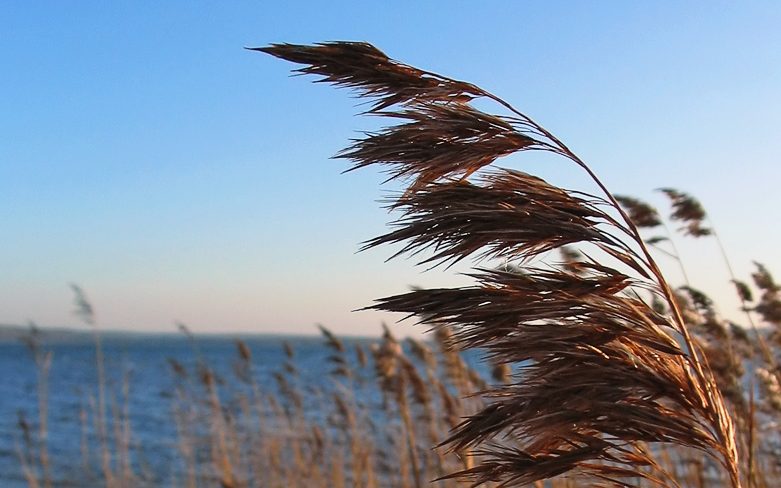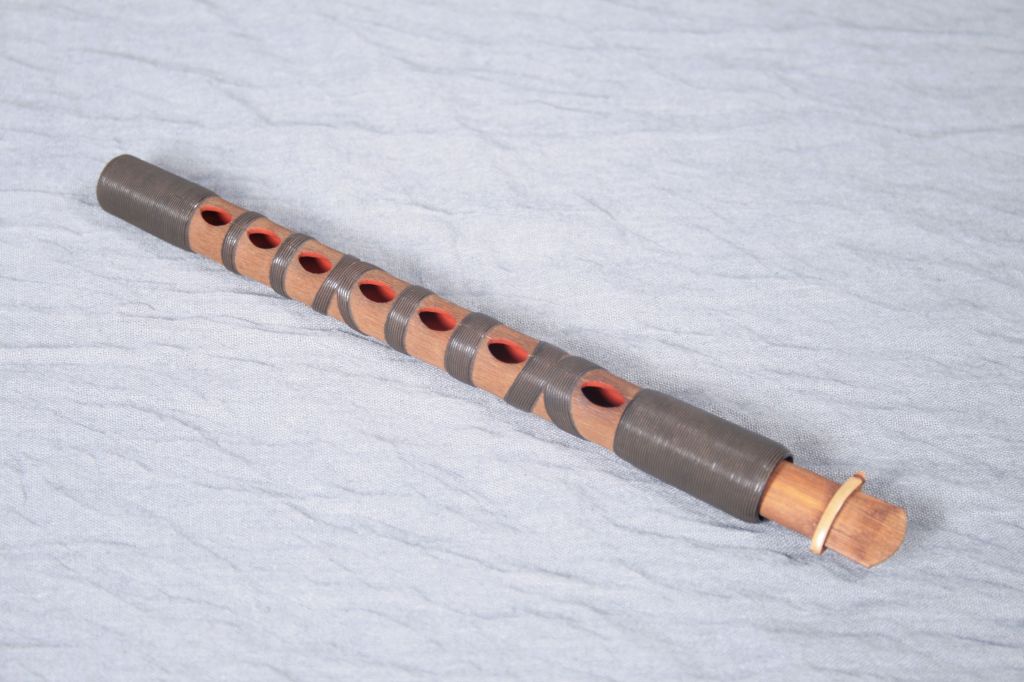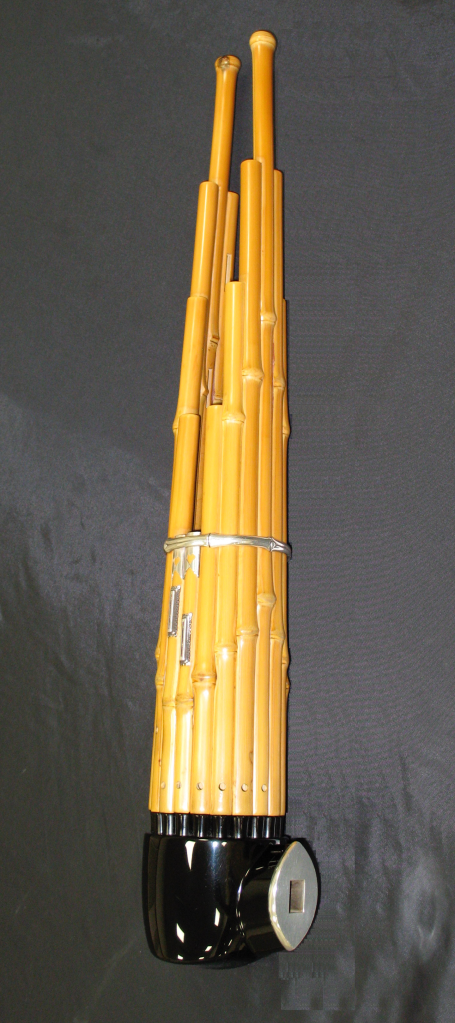We have entered the micro-season of “The First Reeds Grow”, which is the first micro-season of the mini-season of Grain Rain.
Each mini-season contains three micro-seasons. The micro-seasons contained within Grain Rain are:
- The First Reeds Grow (April 20 – April 24)
- The Frost Stops the Rice Grows (April 25 – April 29)
- The Tree Peony Flowers (April 30 – May 04)
These seasons were established in 1685 by Japanese astronomer Shibuka Shunkai and are specific to Japan. However, just because the calendar focuses on Japan doesn’t mean it isn’t applicable to others. No matter where you live you can use these seasons as a starting point for your personal exploration of the world around you.
Right now the landscape is really starting to change. There is new plant life springing up all around us. “The First Reeds Grow” focuses on those plants that are emerging by the lakes, ponds, and rivers.
Reeds
Reeds are the common name for perennial grasses that grow in wetlands. In the scientific taxonomy, they are a part of the Phragmites genus. There are four species within this genus:(1,2,3)
- Phragmites australis– This is the most common species. It also has three sub-species:
- Phragmites australis subspecies. americanus;
- Phragmites australis subspecies. australis
- Phragmites australis subspecies. Altissimus
- Phragmites japonicus – Native to Japan, Korea, Ryukyu Islands, and the Far East of Russia.
- Phragmites karka. – Native to West Tropical Africa to Kenya, Tropical & Subtropical Asia to the Pacific.
- Phragmites mauritianus – Native to the tropical regions of South Africa and the West Indian Ocean.

Historically, reeds have played an important part in Japanese culture. The leaves, roots, seeds, and shoots are all edible and have medicinal qualities.
Reeds were also used to make things like blinds, thatch roofs, paper, and musical instruments. (1)
Two Traditional Japanese Reed Instruments
The Hichiriki
The hichiriki is a Japanese double-reed flute. This flute is 7 inches long (18 cm) and made of lacquered bamboo wrapped in bands of cherry or wisteria bark (5). The flute has seven finger holes on the front and two in the back. The hichiriki is sometimes compared to the clarinet or the oboe and is one of the wind instruments used in gagaku. Gagaku is the traditional court music of Japan.
Gagaku, which means elegant music, was adapted from 6th-century Chinese and Korean musical traditions.(7) Gagaku was established as a tradition for the Japanese court in the 8th Century. Gagaku is still performed today by the Music Department of the Board of Ceremonies, which is part of the Imperial Household Agency of Japan.(7)
The actual reed that is used in the hichiriki may come from a plant in the Phragmites genus or from a bamboo plant. However, some research has been done to determine the best reeds for the hichiriki are made from the stems of Phragmites australis harvested from a reed bed at Udono near Kyoto. (8)
Here is a quick sample of what a hichiriki sounds like courtesy of the Grinnell College Musical Instrument Collection(9)

The Shō
The shō is also a traditional reed instrument that is also used to perform gagaku. The shō has 17-pipes made of bamboo. These pipes are set on top of a circular wind chamber. The musician blows air into the chamber, which then vibrates a reed and produces the sound. Each pipe also has an air hole on it that needs to be covered by the musician’s finger in order to work. The tubes arrangement is said to resemble the folded wings of a phoenix.(10)
Here is what a chord progression sounds like on the shō courtesy of Orchestration in Gagaku Music by Stanford University.

Poems for the Season:
Since this season is all about the arrival of new plant life, I thought it made sense to share some haiku about sprouts. The first two haiku are from Matsuo Bashō.
the bush warbler in a grove of bamboo sprouts sings of growing old -Basho
up from April snow rising Udo sprouts tender purple succulent -Basho
Udo is a perennial plant native to Japan, Korea, and China. Its other names include Spikenard and Mountain Asparagus. Udo is often used in miso soup.
The next two haiku are from Kobayashi Issa.
on the tip of the newly sprouted bamboo... a baby sparrow -Issa
bush clover sprouting-- when people aren't looking the deer eats -Issa
In these two haiku, Issa captures some wonderful moments of spring and provides us with writing that demonstrates his compassion for all living things.
This final haiku also comes from Issa. Although it is not about sprouts, I really enjoyed this one and thought it would be fun to share.
the lunch was taken by the dog! reed warbler's song -Issa
The reed warbler is a migratory bird that returns to Japan from its winter residence in late April and May. Chris Drake describes the reed warbler’s song as “rather long, loud, and insistent cries”.(11) It seems like the poet’s attention was distracted by the reed warbler long enough for the dog to make off with the lunch!
Resources:
- “Phragmites”: Wikipedia
- “Phragmites australis”: Wikipedia
- “Phragmites”; Plants of the World Online: Royal Botanical Garden KEW
- “Hichiriki”: Wikipedia
- “Hichiriki”: Britannica.com
- “Traditional Japanese Musical Instruments”: Wikipedia
- “Gagaku”: Wikipedia
- Kawasaki, Masahiro et al. “Structure and biomechanics of culms of Phragmites australis used for reeds of Japanese wind instrument “hichiriki”.” Microscopy research and technique vol. 78,4 (2015): 260-7. doi:10.1002/jemt.22469
- “Hichiriki”: Grinnell College Musical Instrument Collection
- “Sho”: Orchestration in Gagaku Music by Standford University
- Chris Drake;:“Reed Warbler (yoshikiri)”; World Kigo Database
Basho’s Haiku were retrieved from ”Matsuo Bashō’s haiku poems in romanized Japanese with English translations”, edited by Gábor Terebess
Issa’s haiku were retrieved from David G. Lanoue’s site, Haiku of Kobayashi Issa, and World Kigo Database.
Want to support our work? Visit the Naturalist Weekly bookstore and browse our curated lists of books on poetry and haiku. Or pick up a gift card that can be used throughout the store.

Malaysia is a tropical 🏝 country with rain and shine 🌷🙏♥️🌷happy Wednesday
Hi Thattamma, Thanks for the visit and the comment! I hope all is well and you have a great day.
Most welcome 🙏 Happy Thursday 🌷
I found it lovely to read your celebration of Japanese reeds, Mark, the micro-season when they begin to grow and the instruments that are derived from the reeds. In school years ago I was a clarinet player for many years, and I really enjoyed playing a reed instrument. I found the poems especially sweet, thank you.
Hi Jet, I am glad that your enjoyed this one. I played the drums in my early school years. I never had the opportunity to play any reed instruments. Thanks for adding to the conversation! I hope all is well.
Very interesting. How little we know about such things.
Hi Mary, I know! I so appreciate being able to do these short dives into cultures, animal behaviors, or the weather. So much to learn! Thanks for the comment!
I’m excited to see all the color and activity start to return to the yard. The perennial layer emerges to return to the evergreens and the birds are busy competing for mates. I cannot trust that the frost is truly done with us. We’ve had snow as late as May before. I should have gone to the grocery store for food this morning, but I needed to get some things potted before the rain came. My menfolk can grumble and wait or go to the store themselves! Hahaha. Have a good day, Mark!
Hi Melanie, I hear you about the frost. We got 6 inches of snow yesterday, and it snowed all day today. Looking at the 72 season calendar it says that the frost ends in 5 days and the rice can grow. That one may not apply here. But I am hoping for it!
I was talking to a friend today that said you can officially start complaining about the snow if it is still accumulating in the middle of April.
Good luck with the yard work!
Living so close to a river, I am familiar with the phragmites and I transplanted a clump of them early this spring to prepare for some outdoor renovations here. And yes, they have green shoots growing, despite this up and down weather we are having this April.
Very cool that the timing is about right for you! I have a few marsh marigolds coming up right now and the crocus. I haven’t noticed much progress on the reeds yet. Thanks for sharing!
lovely post with your haikus and music Mark! 💖💖
Hi Cindy, Thank you! I felt very lucky to be able to find samples of these instruments. Thank you for your continued support!
You’re most welcome and it was very cool. It’s my pleasure and thanks for yours always Mark! 💖